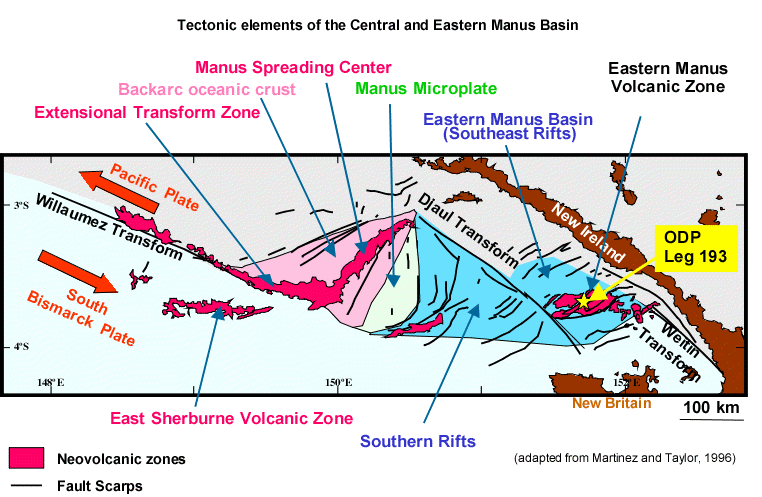
Figure 3. Tectonic model for the Manus Basin, following Martinez and Taylor (1996). About 80 km of extension by low-angle normal faulting and crustal thinning has occurred in the eastern Manus Basin between the Weitin and Djaul transform faults. The same amount of movement occurred on the Willaumez transform fault, where a slight obliquity between extension direction and fault strike allowed volcanism in the Extensional transform zone. Between the Willaumez and Djaul transforms, equivalent movement was accommodated by wedge-shaped opening of the Manus spreading center and compensating counter-clockwise rotation of the Manus microplate. MORB-type basaltic volcanism dominates the Manus spreading center, the Extensional transform zone, the east Sherburne volcanic zone, which overlies a sediment basin, and limited activity in the Southern rifts. By contrast, the eastern Manus Basin is dominated by arc-type volcanism.
